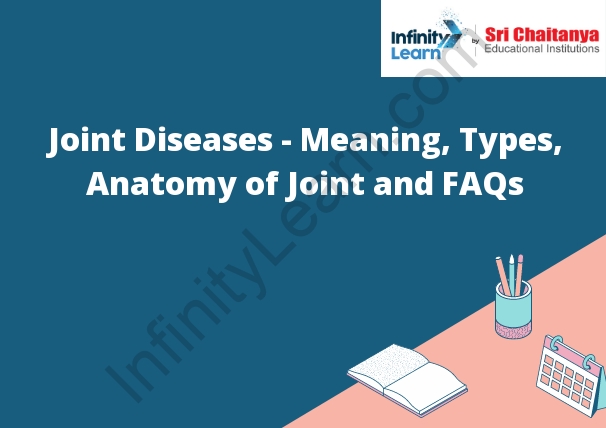Table of Contents
Joint Pain Diseases
Joint pain diseases are a group of conditions that affect the joints, the tissues that connect the bones at the joints, and/or the ligaments that hold the bones together at the joints. The most common joint pain diseases are osteoarthritis, rheumatoid arthritis, and gout.
Osteoarthritis is the most common joint pain disease. It is a degenerative joint disease that results from the breakdown of the cartilage that cushions the joints. This can lead to pain, stiffness, and swelling in the joint. Osteoarthritis is most common in the hip, knee, and hand joints.
Rheumatoid arthritis is a joint pain disease that is caused by inflammation of the joints. It can cause pain, stiffness, and swelling in the joints. Rheumatoid arthritis is most common in the hands and wrists, but it can also affect other joints in the body.
Gout is a joint pain disease that is caused by a build-up of uric acid in the joints. This can lead to pain, swelling, and stiffness in the joint. Gout is most common in the big toe, but it can also affect other joints in the body.
Types of Joint Diseases
There are many types of joint diseases, but some of the most common are:
-Osteoarthritis: This is the most common type of joint disease, and it affects the joints of the hands, hips, and knees. It is caused by the wearing down of the protective cartilage that lines the joints.
-Rheumatoid Arthritis: This type of joint disease is an autoimmune disorder that causes the immune system to attack the joints. It can lead to joint pain, swelling, and stiffness.
-Gout: This type of joint disease is caused by the accumulation of uric acid crystals in the joints. It can cause intense joint pain, swelling, and redness.

Anatomy of Joints
There are three types of joints in the body-fibrous, cartilaginous, and synovial.
Fibrous joints-these joints are held together by dense connective tissue and are immovable. An example would be the sutures between the bones of the skull.
Cartilaginous joints-these joints are held together by cartilage and are movable. An example would be the joints between the vertebrae in the spine.
Synovial joints-these joints are held together by a synovial membrane and are the most common type of joint in the body. They are movable and allow for a great deal of flexibility. An example would be the knee joint.
Osteoarthritis
is a type of arthritis that is caused by the wearing down of the cartilage in the joints. Cartilage is a type of tissue that helps to cushion and lubricate the joints. Osteoarthritis is a common condition that affects millions of people in the United States. The symptoms of osteoarthritis include joint pain, stiffness, and swelling. The treatment for osteoarthritis includes medications, such as pain relievers and anti-inflammatory drugs, as well as surgery.
Rheumatoid Arthritis
Rheumatoid arthritis is an autoimmune disease that causes inflammation in the joints. The inflammation can destroy the cartilage and bone around the joints, leading to pain, stiffness, and joint deformity. The disease can also affect other organs in the body, including the heart, lungs, and eyes.
Spondyloarthritis
is a form of arthritis that affects the spine and other joints in the body. It is a type of autoimmune disease, which means that the body’s immune system attacks its own tissues.
The cause of spondyloarthritis is unknown, but it is thought to be related to a combination of genetic and environmental factors. Some people may be more likely to develop spondyloarthritis because of their genes, and exposure to certain infections or environmental factors may trigger the disease in those people.
Spondyloarthritis can cause pain and stiffness in the spine, hips, and other joints. It can also cause inflammation in the tissues around the joints. The disease can range in severity from mild to disabling.
There is no cure for spondyloarthritis, but there are treatments that can help relieve symptoms. These treatments include medications such as pain relievers and anti-inflammatory drugs, physical therapy, and surgery.
Lupus
is an autoimmune disease that can affect any organ in the body. It is a chronic disease that can flare up and then go into remission. Lupus is caused when the body’s immune system attacks its own tissues.
There is no known cure for lupus, but there are treatments that can help control the symptoms. Some of the treatments used for lupus include medications, such as corticosteroids and antimalarial drugs, as well as lifestyle changes, such as getting enough rest and exercise.
Bursitis
is an inflammation of the bursa. A bursa is a small, sac-like structure that lies between a bone and a muscle, tendon, or skin. Its purpose is to reduce friction between these structures. Bursitis may cause pain, swelling, and stiffness.
There are several types of bursitis, including:
-shoulder bursitis
-elbow bursitis
-hip bursitis
-knee bursitis
-ankle bursitis
Bursitis is most often caused by overuse of the affected joint, but can also be caused by a direct blow to the joint, infection, or rheumatoid arthritis. Treatment for bursitis may include rest, ice, compression, and elevation of the affected joint, as well as NSAIDs to reduce inflammation. In some cases, surgery may be necessary to remove the bursa.
Gout
Gout is a type of arthritis that is caused by high levels of uric acid in the blood. Uric acid is a waste product that is created when the body breaks down purines. Purines are a type of protein that is found in many foods, including organ meats, seafood, and some vegetables. When the body has too much uric acid, it can form crystals in the joints. These crystals can cause pain, inflammation, and swelling.
Gout is more common in men than in women. It can occur at any age, but is most common in middle-aged and older adults. Some people are more likely to develop gout, including those who:
Are overweight or obese
Drink alcohol
Have high blood pressure
Have a family history of gout
Take certain medications, such as diuretics and aspirin
Symptoms of gout include:
Pain, inflammation, and swelling in a joint
Redness, warmth, and tenderness in the joint
A feeling of stiffness in the joint
The joint may be swollen for a few days, and then the pain and swelling will go away. The pain may come back if the person eats foods high in purines.
If you have gout, your doctor may prescribe medications to help reduce uric acid levels in the blood and to relieve pain and inflammation. Lifestyle changes, such as losing weight, eating a healthy
Infectious Arthritis
Infectious arthritis is an inflammation of a joint that is caused by a bacterial, viral, or fungal infection.
Infectious arthritis can occur as a result of a number of different infections, including:
-Bacterial infections, such as septic arthritis, which is a joint infection caused by bacteria entering the bloodstream
-Viral infections, such as viral arthritis, which is an inflammation of a joint caused by a virus
-Fungal infections, such as candida arthritis, which is an infection of the joint caused by a fungus
Infectious arthritis can affect any joint in the body, but is most commonly seen in the knee, hip, and shoulder.
Symptoms of infectious arthritis include:
-Redness and swelling of the joint
-Pain in the joint
-Stiffness of the joint
-Warmth over the joint
-Loss of range of motion in the joint
-Feeling generally unwell
Infectious arthritis is a serious condition and requires prompt treatment. If left untreated, the infection can spread to other parts of the body and cause serious health complications.









